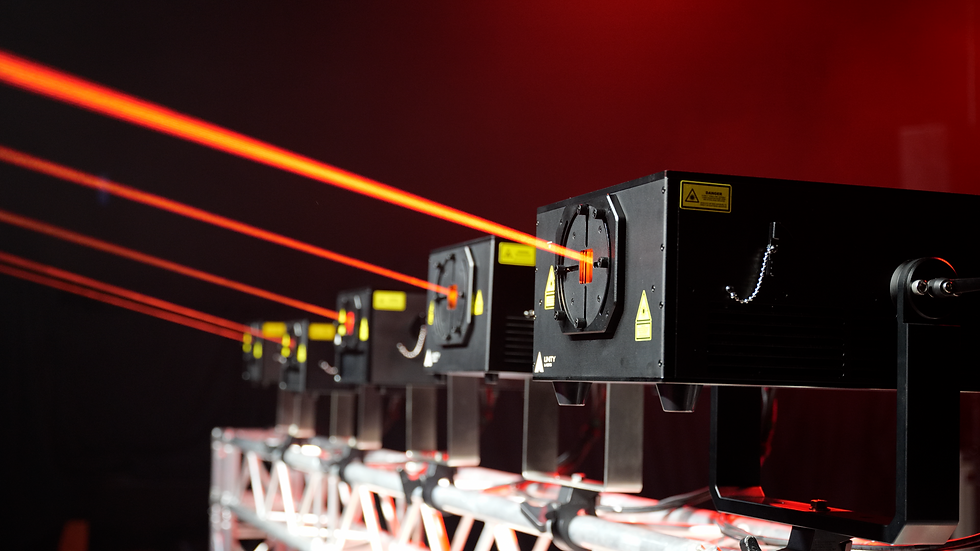Oil-Based vs. Water-Based Haze
- @LimeLightWired

- Jun 26, 2023
- 4 min read
Updated: Apr 29, 2024
Ah, the eternal battle between oil-based and water-based haze. For stage lighting technicians and programmers alike, it's a familiar dilemma: which one should you choose? It can be challenging to decide between them both—oil haze creates more of an ethereal mood, while water-based is more economical. Let's dive into oil vs. water-based haze to learn about their differences and similarities.

What Is A Haze Machine?
A haze machine works by vaporizing a specialized fluid, known as haze fluid, into tiny particles and dispersing them into the surrounding environment. When the haze machine vaporizes the liquid and propels it into the air, it creates a light, translucent mist or haze that enhances lighting effects and adds depth to the atmosphere.
Haze machines are available in various sizes and configurations, ranging from small portable units to larger professional-grade machines. They often feature adjustable controls for haze output and fan speed to achieve the desired effect. Some advanced haze machines may also include DMX control capabilities, allowing for synchronized control with lighting systems.

When using a haze machine, it is crucial to use the appropriate haze fluid recommended by the manufacturer for optimal performance. You've probably come across two main types: oil-based and water-based hazers.
Differences Between Water & Oil-Based Haze
When creating that perfect atmospheric effect in productions, haze plays a significant role. You've probably come across two main types: oil-based and water-based hazers. Let's explore their differences, starting with the texture and uniformity they provide.

Oil-based haze machines deliver a more even texture, creating that desired atmospheric effect. On the other hand, water-based fluids may start off a bit cloudy. With the addition of fans, you can achieve the same results. However, some oil-based hazers have a downside—they can appear to have a yellow tint.
Hang time is another crucial factor to consider. It's common to see hazers running before a show to ensure that haze fills the venue. Oil-based haze has the upper hand here. Its smaller, virtually weightless particles allow for a longer hang time, adding that extra touch of enchantment. Water-based hazer machines produce an atmosphere that can dissipate quicker.

Now, let's address the cleanliness factor. Oil-based haze may give you that mesmerizing haze, but it is known to leave behind a residue. Water-based fluids are a clean slate. They dissipate without a trace, making cleanup a breeze. So, if an easy and hassle-free maintenance routine is important to you, water-based hazers are the way to go.
Let's get down to brass tacks: cost. Oil-based hazers generally come with a higher price tag. Some even require CO2 to operate, adding to the expenses and complexity. On the flip side, water-based hazers offer a more affordable option, require less maintenance, and can be a budget-friendly choice for your production needs.
To wrap things up, when it's time to choose between oil-based and water-based hazers, consider your specific production requirements and any venue regulations. Oil-based hazers bring longer hang time and uniform texture but at the cost of potential residue and higher expenses. Water-based hazers offer clean, safe, and cost-effective operation.
Can I Put Fog Fluid In Haze Machines?
No, putting fog fluid in haze machines is not a good move. Fog fluid and haze fluid are designed to be completely different products and cannot be interchanged for one another.
What Is The Difference Between Fog & Haze
Understanding the distinctions between fog and haze can be crucial for their use in different settings. Fog machines can be particularly effective for creating a dense, immersive performance or event space atmosphere. In contrast, haze machines might be a better choice for accentuating light shows or visual effects without obscuring performers or other elements.
The primary difference between the two lies in their operational processes. Haze machines rely on a diffused and dispersed mix of air and fluid, whereas fog machines rely on heating and pressurizing fluid to create a thicker, more voluminous output. By recognizing the unique strengths and capabilities of each, event planners and technicians can make more informed choices when it comes to enhancing the visual experiences of their audiences.

Are Haze Machines Safe?
When used correctly and according to the manufacturer's instructions, haze machines are generally considered safe. Adequate ventilation is essential when using a haze machine. Haze fluid is designed to disperse and evaporate, but in enclosed or poorly ventilated spaces, the haze can accumulate and potentially cause respiratory discomfort. Ensure that there is proper airflow and ventilation to prevent excessive buildup of haze.
Do Haze Machines Trigger Smoke Alarms?
In most cases, haze machines should not trigger smoke alarms that are specifically designed to detect smoke particles in the air. The particles generated by haze machines are usually smaller than those produced by smoke, making them less likely to be detected by smoke alarms.
That being said, it's important to note that some sensitive smoke alarms may still be triggered by the particles or humidity generated by a haze machine, especially if they are used excessively or close to the sensor.
To ensure safety and avoid false alarms, following the manufacturer's instructions for both the haze machine and the smoke alarms is always recommended. If you use a haze machine in an area with smoke alarms, consider testing the setup before a performance or event to determine if any interference occurs.

















There is also the fire alarm issue. Water based is more pro to setting of smoke alarms.